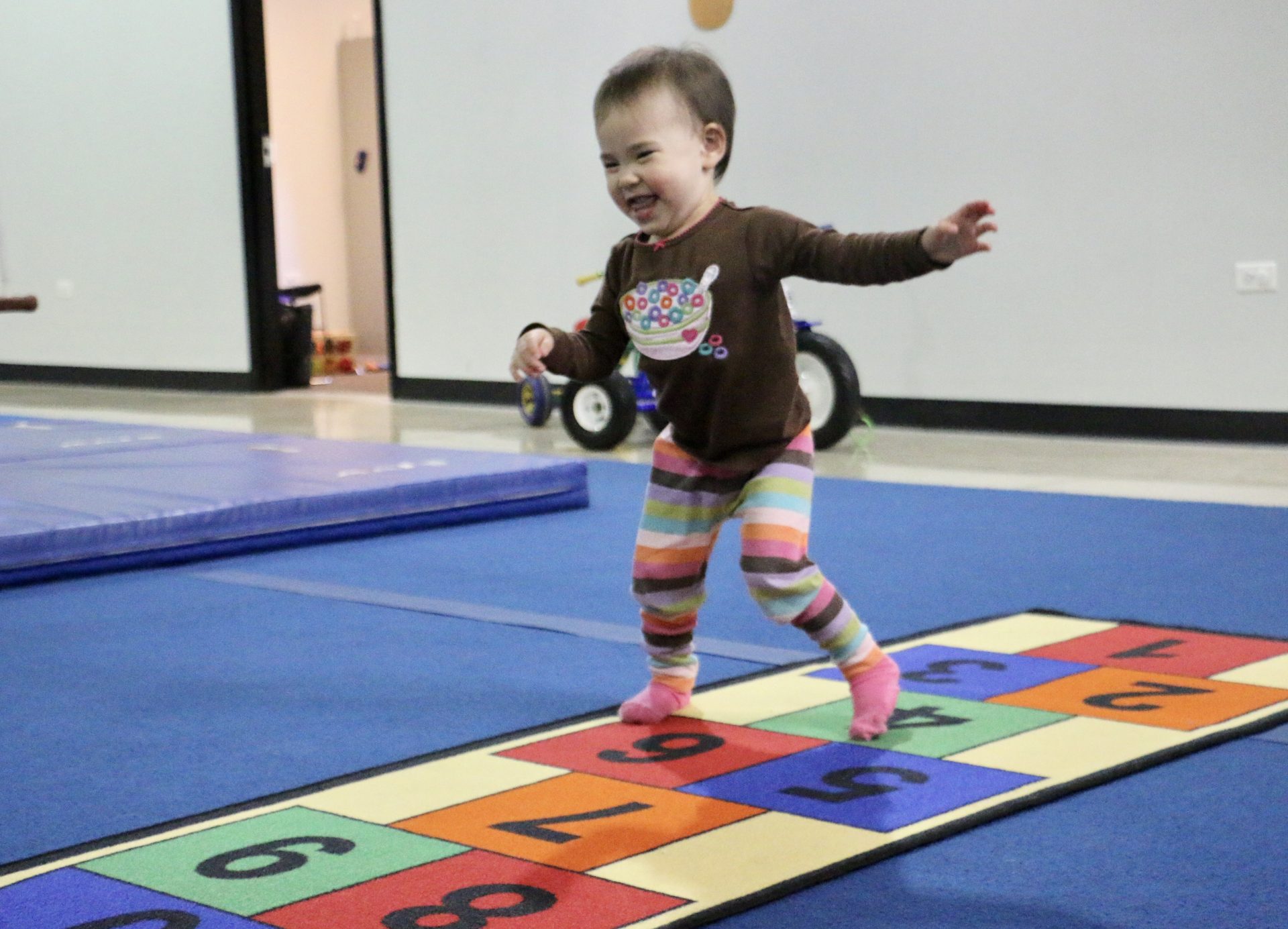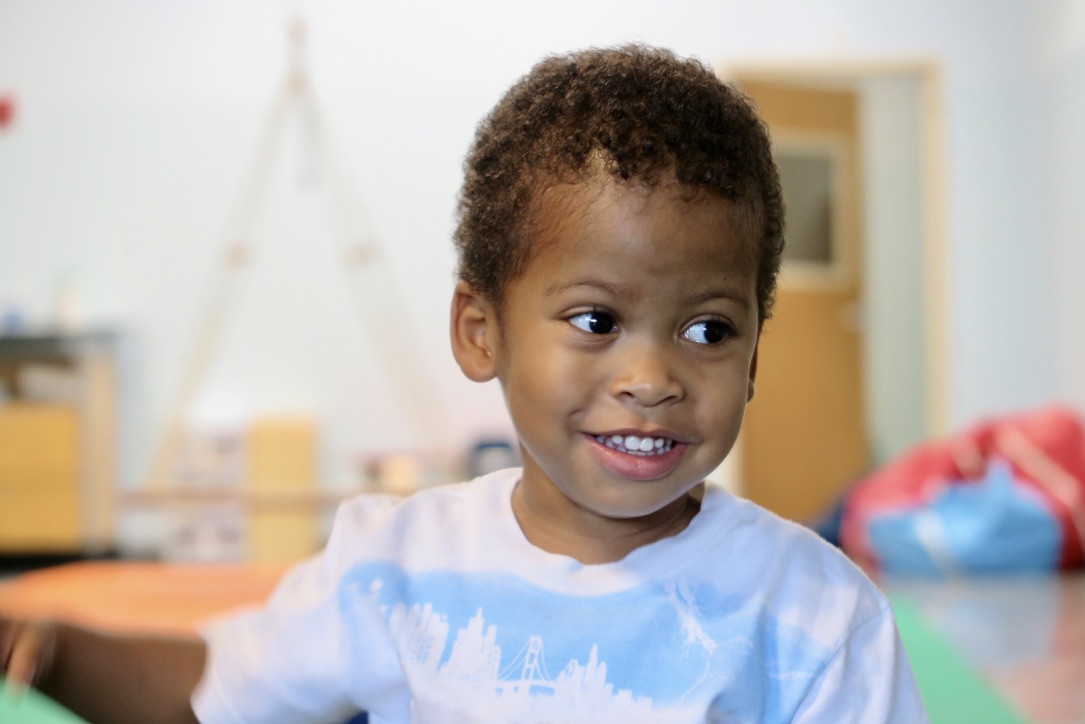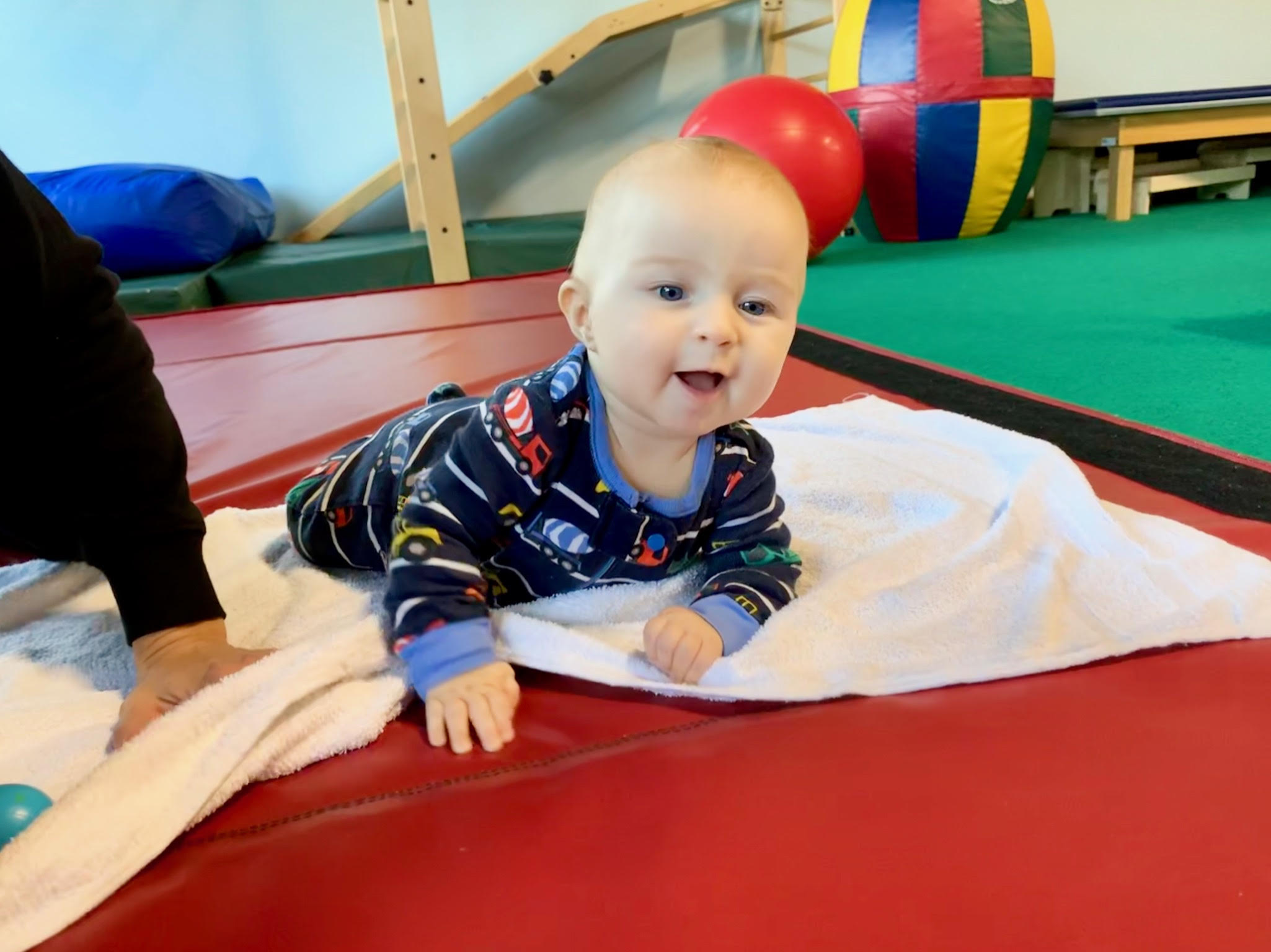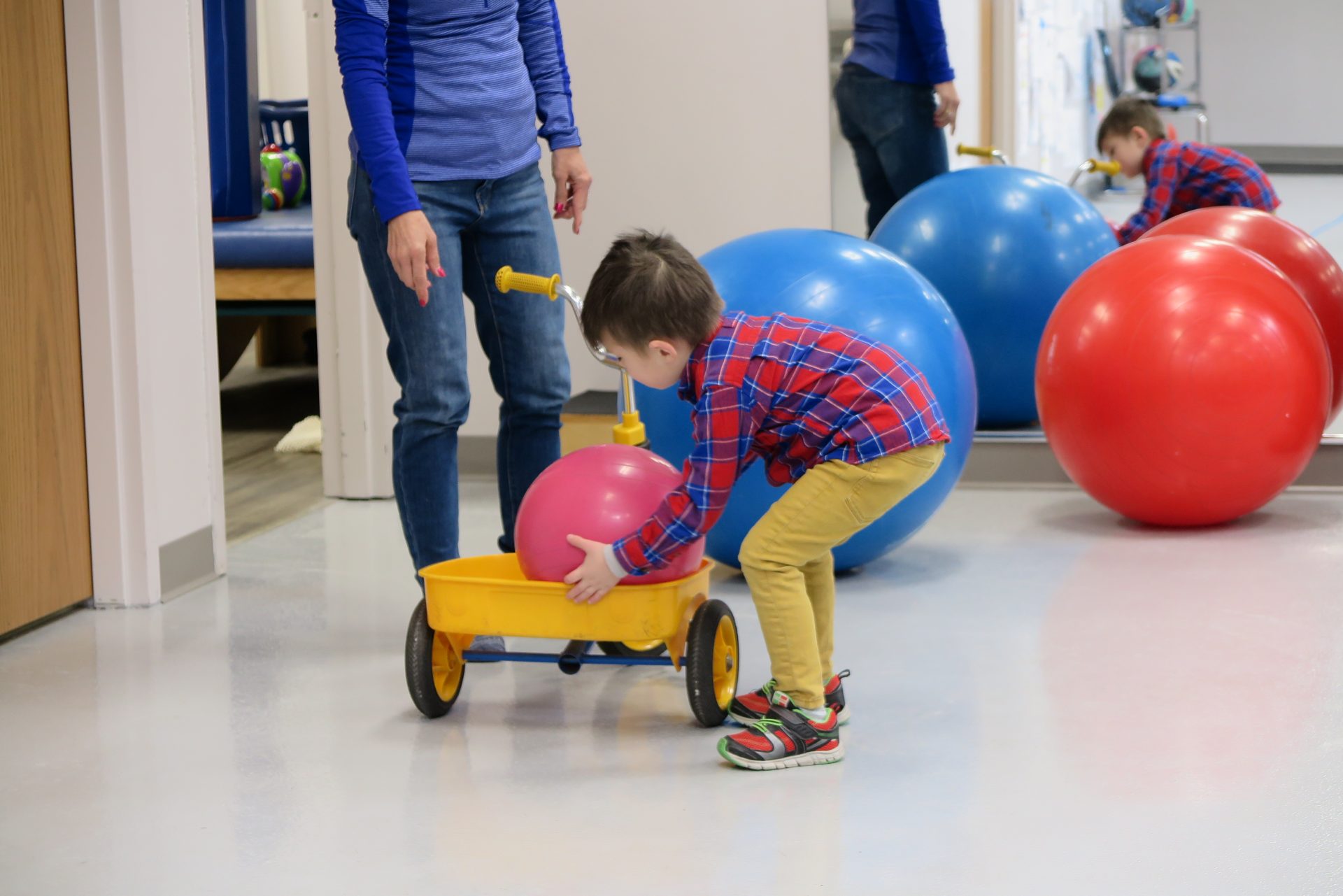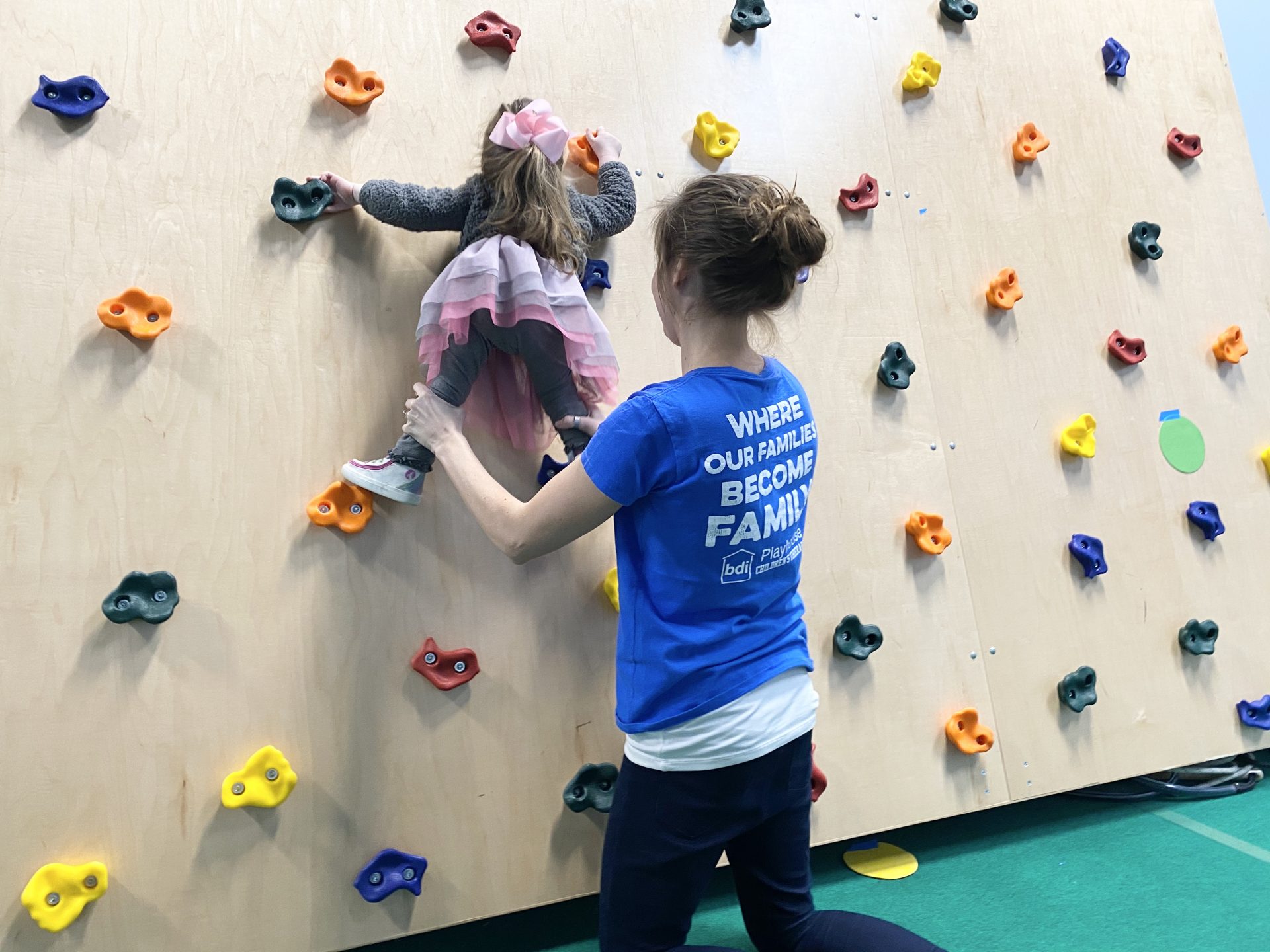Fixing a Flat (baby head): What is Plagiocephaly and what can I do to correct it?
What is Plagiocephaly (pronounced play-jee-oh-sef-uh-lee)?
Sometimes infants are born with or develop plagiocephaly or brachycephaly, a flat spot on the back or backside of their heads that is noticeable and may raise questions or be a cause of concern.
Understandably, you may ask:
- Will my baby’s head shape stay like this?
- Is there anything I can do to prevent or fix this?
- Will this affect my baby’s brain growth or development?
In the early 90’s the American Academy of Pediatrics advised parents to put babies to sleep on their backs to reduce the risk of SIDS. This increased the time spent with increased pressure on the baby’s head from the surfaces they rested on. This also increased the incidence of plagiocephaly (a.k.a. “flat head syndrome”). In addition, there are dozens of baby positioning “containers” such as infant car seats, swings, and bouncy chairs that keep babies resting for longer periods on the back of their heads. Flat spots can make it challenging for babies to keep their heads in midline and they can develop a preference to turn or face toward a particular side. These babies may be resistant to or even refuse tummy time because lifting their little heads up against gravity can seem difficult and stressful. Although this will not typically cause problems with brain development, babies that have a flat spot may experience movement preferences to one side, may not latch on for nursing as well as expected, will experience reflux or digestive issues, and may be extra fussy, colicky or more difficult to calm.
How can I tell if my baby has a flat spot?
No two babies have the same head shape but asymmetries or flat spots are usually easy to detect if you know what to look for. Most areas will round or even out as a baby moves her head side to side, up and down, and begins to roll over in the first few months. Take a look at the baby’s head in several positions. If Baby has a lot of hair it is good to do this while the hair is wet, such as after a bath.
- Look at your baby “face to face.” Are both eyes the same size or is one wider or narrower than the other? Is one cheek puffier than the other? Does the back of his head appear unusually wide or does the head slant sharply upward from his forehead to the back of the head? Do you notice that one ear is higher or in front of the ear on the other side?
- Look at the baby’s head shape from behind while supporting him in sitting. This is often the first place a flat spot is detected. Are the ears level? Does the head tilt to one side? Is the top of the head very wide compared to the area just above the neck?
- Now, look at the baby’s head from the top. Is one side of the forehead more forward than the other? Can you see one cheek puffing out more than the other? Is one ear significantly positioned in front of the other?
- Finally, look at the baby’s head from the side. Is there a slope from the forehead that rises to a point in the back?
Notice if your baby’s head is moving freely with his body or is the head “planted” on the surface? Is he beginning to lift his shoulders and arms off of the surface and is the baby beginning to bring hands or toys to his mouth? Does the baby constantly only put one hand in his mouth or does he turn his head to mouth a toy instead of bringing the toy toward his middle. When Baby is on his belly, can he lift his head easily up in the middle or does he usually turn it fully to one side or the other to lift it up. These are all signs that there may indicate a muscle imbalance or be present as a result of the flat spot on a baby’s head. While none of these seem particularly alarming, they can keep your baby from developing movement and visual motor patterns that will advance him more naturally toward rolling, crawling, walking and gross motor play.
What Can I do if I notice a flat spot?
- Provide lots of opportunities for Tummy time.
- Limit time in baby carriers, car seats, bouncers, swings, and containers
- Carry baby when you can but change positions often to keep hips healthy
- Alternate the ends of the crib for sleeping so baby will face stimulating sights or light during waking times
- Provide visual stimulation in front of the baby that moves side to side
- Consult your pediatrician or a pediatric physical therapist if a flat spot persists for more than a few weeks. A baby’s head shape can change quickly from birth to 6 months.
What if the flat spot won’t go away?
If your baby’s head is held unusually still, he has a distinct head-side or position preference, he is having difficulty nursing, bottle feeding is stressful, or he is resisting positions like tummy time contact your pediatrician or a pediatric physical therapist who specializes in treating infants. It is best not to take a “wait and see” approach because most of a baby’s head growth happens between birth and 6-8 months and this is the best time to make big changes in head shape and mobility. Most consultations are free and professionals can offer advice and solutions that can help you and your baby.
BDI Playhouse Children’s Therapy offers free screenings and consultations through Telehealth or at one of our child-friendly therapy gyms in Orland Park and Aurora, IL
Written by Sheri Ireland-Berk, PT
Physical Therapist
No Fields Found.



